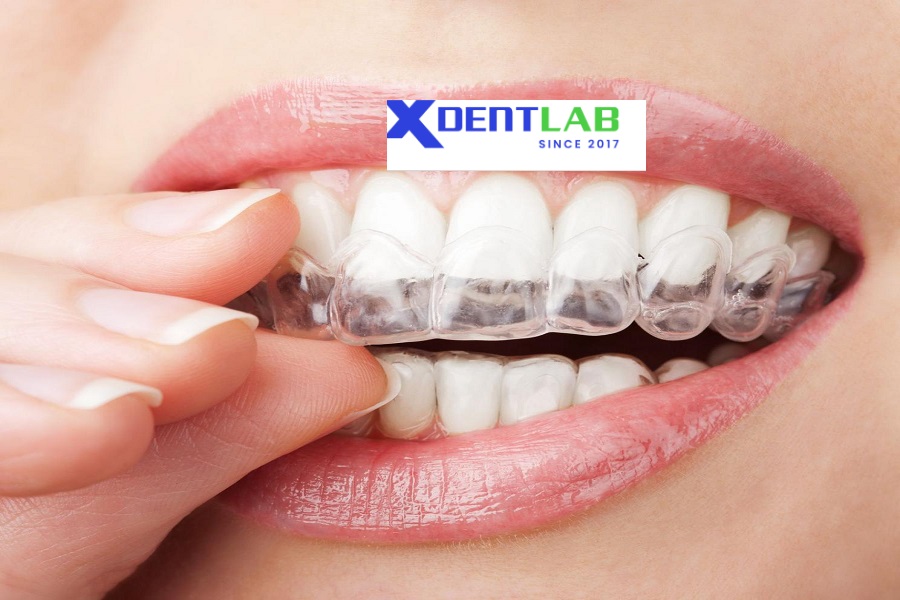
Introduce Global OEM clear aligner services xdentlab.com . Clear aligners are a modern orthodontic treatment designed to gradually shift teeth into their desired positions. Unlike traditional braces, which employ metal brackets and wires, clear aligners utilize a series of nearly invisible, custom-made plastic trays. These aligners are worn over the teeth and are typically changed every one to two weeks, following a digitally planned treatment protocol that leverages advanced technology.
Link fanpage : Vietnam Dental Lab
Understanding Clear Aligners and Their Role in Orthodontics
The evolution of clear aligners stems from innovations in 3D scanning and digital modeling. This technology enables orthodontists to create accurate, customized treatment plans tailored to each patient’s unique dental structure. Through precise digital imaging, the orthodontist can visualize how the teeth will move over time, allowing for a more efficient treatment experience. The material used in clear aligners is usually a type of medical-grade thermoplastic, specifically designed for dental applications, ensuring both safety and comfort.
Introduce Global OEM clear aligner services One of the primary benefits of clear aligners over traditional braces is their aesthetic appeal. Patients often prefer the discreet nature of clear aligners, as they are less noticeable than metal braces. Additionally, clear aligners are generally more comfortable, as they do not have protruding brackets or wires that can cause irritation to the gums and mouth. They are also removable, which allows for easier oral hygiene and the ability to eat without restrictions.
The effectiveness of clear aligners in treating various orthodontic issues has been widely documented. From minor spacing problems to more complex dental misalignments, clear aligners have proven to be a viable alternative for many patients. As technology and research continue to evolve, the role of Original Equipment Manufacturers (OEM) in the production and development of high-quality clear aligners becomes increasingly crucial in delivering effective orthodontic solutions. Understanding these foundational elements is essential as we explore the broader landscape of clear aligner services in the global orthodontic market.
The OEM Landscape: Key Players and Their Solutions
The global landscape of Original Equipment Manufacturer (OEM) clear aligner services has evolved significantly, marked by a variety of key players offering innovative and tailored solutions for orthodontic practices. Among the most prominent companies in the field are Align Technology, 3M, and Ormco, each contributing unique strengths to the market. Align Technology, known for its flagship product, Invisalign, leads the market in both brand recognition and effectiveness, leveraging advanced technology and comprehensive training programs to support orthodontists. 3M, a diversified technology company, provides a range of orthodontic products, including Vietnam dental lab that emphasize durability and esthetic appeal, enabling practitioners to deliver personalized treatment options. Likewise, Ormco offers a combination of traditional and digital solutions that accommodate the diverse needs of patients and practitioners.
The partnerships between orthodontic practices and OEMs vary significantly, often tailored to meet specific practice goals and patient requirements. Private labeling emerges as a common strategy, allowing orthodontists to market clear aligners under their brand name, thereby retaining patient loyalty while capitalizing on the established reputation of leading OEMs. Furthermore, many OEMs enhance their production capabilities by investing in cutting-edge technology, such as 3D printing and automation, which streamlines the manufacturing process and ensures high-quality outputs.
Quality control remains a critical aspect of these partnerships as OEMs implement rigorous testing protocols to verify the performance and safety of their aligners. As innovation continues to drive the orthodontic industry, companies are increasingly focused on developing materials and designs that enhance treatment efficacy and patient comfort. Competitive pricing further aids in meeting the rising demand, enabling practices to offer affordable solutions while maintaining high service standards. Ultimately, the dynamic interactions between OEMs and orthodontic practices are shaping the future of clear aligner services, ensuring improved access and outcomes for patients worldwide.
Future Trends and Innovations in Clear Aligner Technology
Dental lab in vietnam As the landscape of orthodontics evolves, the future of clear aligner technology is poised for significant advancements. Material science plays a crucial role in enhancing the efficacy and comfort of aligners. New materials are being developed that offer improved flexibility and strength while maintaining transparency. One area of focus is the introduction of thermoplastic elastomers which not only allow for a better fit but also contribute to less discomfort during treatment. This evolution in materials is expected to lead to aligners that are not only more effective but also less noticeable to wearers.
Furthermore, the integration of smart technology within clear aligners is gaining momentum. With the advent of sensors and tracking systems, manufacturers are moving toward producing aligners that can provide real-time feedback to both orthodontists and patients. This approach allows for personalized treatment plans, which can be adjusted dynamically based on the progress monitored through these smart devices. For instance, the incorporation of mobile applications to track wear time and treatment milestones offers an unprecedented level of engagement for patients, ensuring they remain committed to their orthodontic journey.
Must-see articles : Global Clear Aligners Production
Artificial intelligence (AI) is another game-changer in the realm of clear aligners. AI algorithms are being employed to analyze patient data more effectively, predicting treatment outcomes with enhanced accuracy. This capability enables orthodontists to create custom treatment plans that cater specifically to individual dental structures. Additionally, AI-driven simulations can visualize potential outcomes, allowing both practitioners and patients to foresee their progress. Despite these promising innovations, the OEM market must navigate regulatory challenges and rising competition. Compliance with international regulations will be paramount to ensuring the safety and efficacy of new products. Moreover, increasing competition may drive prices down, potentially benefiting consumers while challenging manufacturers to innovate continually. The balance between innovation, regulation, and market dynamics will undoubtedly shape the future of clear aligner services in the coming years.